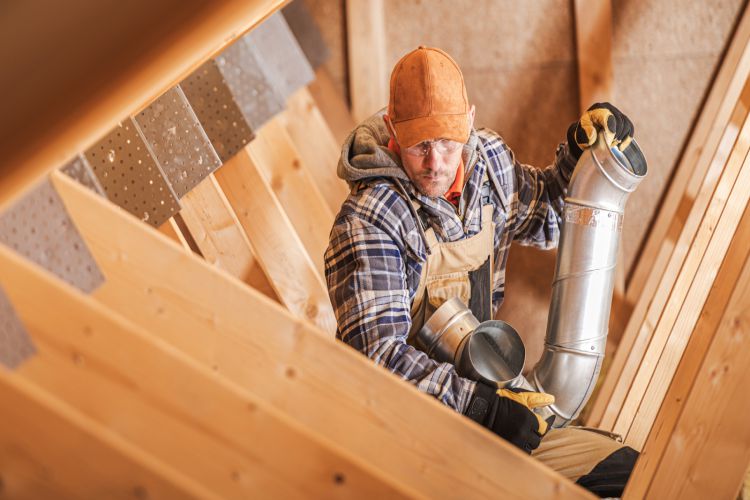Energy costs continue to rise, prompting homeowners to look for practical ways to reduce their monthly utility bills. One of the most effective and often overlooked methods is improving attic insulation. The attic is a critical barrier between the outside environment and the living spaces below. Without proper insulation, heated or cooled air easily escapes through this area, forcing heating and cooling systems to work harder and consume more energy. Investing in attic insulation is a proactive approach that offers long-term savings by enhancing energy efficiency. We will explore how attic insulation can significantly reduce utility bills, the mechanisms behind its effectiveness, and practical steps to ensure your attic provides maximum energy savings throughout the year.
Key Ways Attic Insulation Helps Cut Down Utility Bills
1. Reducing Heat Loss in Winter and Heat Gain in Summer
Attic insulation creates a thermal barrier that slows the transfer of heat. During colder months, warm air inside your home rises and escapes through poorly insulated attic spaces. This results in heat loss, causing heating systems to run longer to maintain comfortable indoor temperatures. Proper insulation minimizes this escape of warm air, meaning your furnace or heater uses less energy to keep rooms warm.
Conversely, in the summer, hot outside air tries to penetrate your home through the attic, raising indoor temperatures and increasing the workload on air conditioning systems. Effective insulation limits this heat gain, so it keeps the living spaces cooler without overburdening your cooling units. The ability of attic insulation to moderate temperature extremes, both in winter and summer, directly translates into lower energy consumption and reduced utility bills.
2. Improving HVAC Efficiency and Longevity
Heating, ventilation, and air conditioning (HVAC) systems are designed to maintain a steady indoor temperature by compensating for heat loss or gain. When attic insulation is lacking or insufficient, these systems must operate continuously or cycle on and off more frequently to offset temperature fluctuations. This constant demand increases electricity or fuel bills and places extra strain on the HVAC equipment, potentially shortening its lifespan.
Proper attic insulation reduces the energy burden on your heating and cooling systems, enabling them to function more efficiently. Maintaining a stable indoor environment makes the HVAC units use less energy per cycle and experience less wear and tear. Over time, this can lead to lower repair and replacement costs and the immediate savings seen on utility bills.
3. Minimizing Air Leakage and Drafts
In many homes, air leaks around attic access points, vents, and gaps in the roof structure contribute to energy waste. Uninsulated or poorly insulated attics often have spaces where outside air can infiltrate or conditioned indoor air can escape. These leaks create drafts and make it difficult to maintain consistent temperatures indoors. Attic insulation combined with proper sealing techniques helps to close these gaps, reducing the amount of uncontrolled airflow.
By preventing drafts, insulation ensures that the temperature-controlled air stays inside your living areas longer, decreasing the workload on your heating and cooling systems. This enhanced air retention improves comfort and directly lowers the energy needed to keep your home at a steady temperature, leading to noticeable savings on your monthly utility bills.
4. Enhancing Home Comfort and Consistency
An often-overlooked benefit of attic insulation is its impact on overall comfort within the home. When insulation is inadequate, certain rooms may feel colder or hotter than others due to heat escaping or entering through the attic. This uneven temperature distribution often causes occupants to adjust thermostats frequently or use supplemental heating and cooling devices, increasing energy use and utility costs. Proper attic insulation creates a more uniform thermal envelope, allowing your home to maintain a consistent temperature throughout. This stability reduces the need for constant thermostat adjustments and reliance on extra appliances. The improved comfort level can lead to more efficient energy use habits, which contribute to lowering utility bills over time.
5. Increasing the Value and Appeal of Your Home
Beyond the direct impact on energy bills, well-installed attic insulation can also increase your home’s value and market appeal. Prospective buyers often look for energy-efficient homes that offer lower ongoing maintenance and utility costs. A properly insulated attic is a sign of good home maintenance and can be attractive in competitive real estate markets. Additionally, many local governments and utility companies offer subsidies or rebates for homes meeting certain energy efficiency standards, including insulation improvements. Taking advantage of these programs can offset the initial insulation installation cost while boosting the long-term savings on your utility expenses. This combination of energy savings and increased home value makes attic insulation an investment that pays dividends beyond lower bills.
Attic insulation is pivotal in managing a home’s energy consumption and reducing utility bills year-round. Proper attic insulation keeps living spaces comfortable while requiring less energy input by controlling heat transfer, minimizing drafts, and improving HVAC system efficiency. The benefits extend beyond immediate cost savings, including increased home value and potential eligibility for energy incentives. Whether selecting the right insulation material or ensuring consistent maintenance, investing in attic insulation is a practical approach to energy conservation and financial savings. We have outlined how this often-overlooked element of home maintenance can lead to substantial reductions in utility expenses, providing both comfort and economic advantages that make it a worthwhile consideration for every homeowner.

